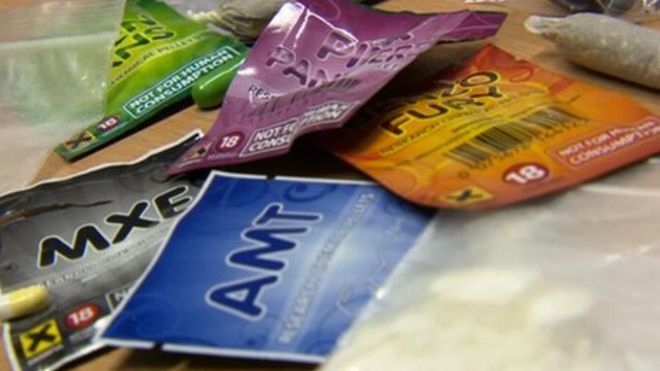At the beginning of November practice partners, police, health professionals, academics and service users came together at ‘The Core’ in Newcastle to discuss the impact and consequences of Novel Psychoactive Substances (NPS) – commonly known as ‘legal highs’. Before anything had even begun we had the BBC on the phone, asking if they could come and film us and interview people about NPS for their forthcoming Panorama show, airing in 2017. NPS is certainly newsworthy. It has captured the public imagination in a myriad of ways, sparking fears of an epidemic, concerns over the impact it is having on resources, and headlines from The Independent declaring Newcastle to be ‘Britain’s most addicted city’. How much truth is there in these claims and how much of this is just hyperbole? What impact are NPS having on North East England, and what are the consequences? We tackled these questions during the event, generating lively debate. These discussions were grounded in the most up-to-date research, as well as city-wide strategies to tackle NPS, and personal accounts of NPS use.
 |
| Image courtesy of the bbc website |
Professor Eugene Milne, the Director for Public Health in Newcastle Local Authority, opened the discussions by highlighting that NPS use is continuing to put pressure on available resources across emergency responders in the local area, that service providers are working hard to develop pathways to treatment, and that there are unknown long-term health consequences for this group of people. He spoke about the local and city-wide strategies that are currently being developed through a collaborative process within the ‘Task and Finish’ group focused on tackling issues around NPS use, distribution and management.
Dr Michelle Addison (that’s me!) and Dr Kelly Stockdale were up next to discuss our research, funded by N8 Policing Partnership, about the impact and consequences that NPS are having on police practitioners and substance users in the North East. We showed that NPS users are perceived to be extremely volatile in custody and the staff were concerned with managing risk – both to themselves and this vulnerable group of people. The custody nurse was viewed to be a great asset but users were still frequently transferred to A&E – creating a further resourcing challenge. NPS users felt that the substances were be highly addictive and linked to poor health outcomes. They were keen on getting help and treatment but were unsure about where to access this.
We were joined by Kieran Platts, Project Officer at Youth Homeless North East (YHNE). He gave a lively account of the really valuable work he has undertaken exploring young people’s views on NPS. This work was prompted by concerns raised through the housing and youth homeless sector who report finding it increasingly difficult to manage the impact of NPS on their resources and service users. Kieran added to the debate, saying that NPS are undermining the operational delivery of services for homeless young people and adversely effecting young people’s ability to address their individual housing and associated needs.
Professor Simon Thomas, from Newcastle University, talked about the toxicology of NPS – an elegant and accessible insight into their chemistry and toxic effects. He presented interim data from the Identification of Novel psychoActive Substances (IONA) study which is collating information about the range and prevalence of NPS that are present in patients who have ingested acutely toxic substances in the UK. He talked everyone through the emerging trends of NPS use in different areas of the UK, as well as changes over time, and differences in clinical effect.
Lorna Smith, (Public Health Registrar) and Rachael Hope (Community Safety Specialist - Drugs) Newcastle City Council, delivered important key messages about the evidence led approach underway to address NPS across Newcastle. Leading on the Task and Finish group, they have developed a detailed city-wide plan focused on understanding the circumstances of the NPS user, improving practice, and ways of protecting vulnerable groups of people. They highlighted the importance of tackling supply in the city and across the force area, but described this as an iterative process of action and learning in a relatively unknown context.
Chris Strachan, who is currently a volunteer at Positive Response to Overcoming Problems of Substance misuse (PROPS) North East, talked us through his personal account of NPS from a user perspective – offering bold and challenging insights into how users are perceived. Not all users are vulnerable and some would prefer to self-identify as psychonauts (Davey et al., 2012) – people who purposely experiment with drugs and establish detailed technical knowledge. His feelings were that practitioners should not be fearful about engaging with NPS users, adding that they are often incredibly knowledgeable about the chemical structures of these substances.
We couldn’t permit the BBC to film us for ethical reasons, but many of our speakers have been in communication with them since and will appear on Panorama in 2017. After a lot of rich debate however, Chief Inspector Lisa Hogan, Northumbria Police, brought it all together by emphasising that there are ongoing strategies and research underway to expand the evidence base around NPS – but this needs to be further developed. These discussions helped to provide in depth insight into where we are at with NPS, and what we currently know – but of course, there is more to be done. Future directions at the moment are focused on developing meaningful therapeutic interventions to help support users and understand the long-term health outcomes from NPS use.
The event Novel Psychoactive Substance (NPS) use and its consequences was delivered in partnership with Public Health England (John Liddell) and Fuse.
Join the discussion on Twitter using: #NPSimpact





